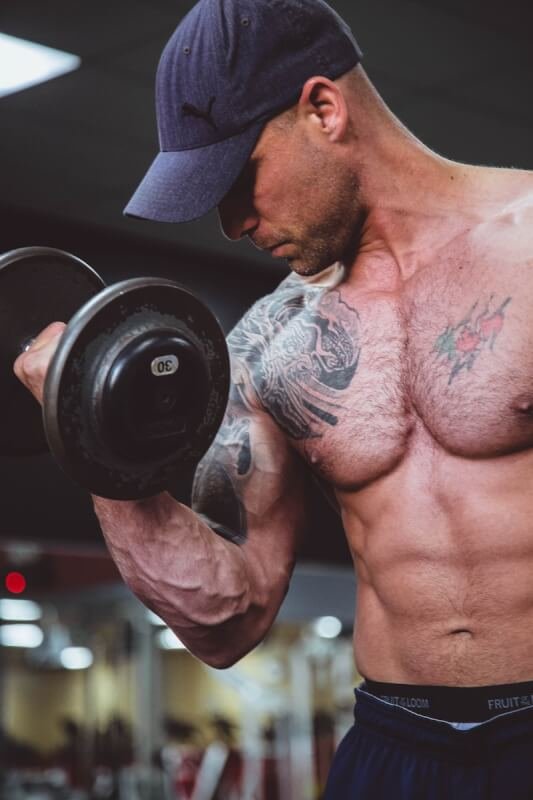Have you ever wondered what exactly functional training is and how it can benefit you? Functional training is a type of exercise that focuses on movements and exercises that mimic real-life activities. Instead of isolating specific muscles, it engages multiple muscle groups simultaneously, helping you improve strength, endurance, flexibility, and overall mobility. In this article, we will explore the concept of functional training and discuss its many benefits for individuals of all fitness levels. Whether you are an athlete looking to enhance your performance or simply someone seeking to improve your everyday movements, functional training has something to offer to everyone. So, let’s dive in and discover the incredible advantages of functional training for your body and mind.
What is Functional Training?
Definition of Functional Training
Functional training is a type of exercise that focuses on movements and exercises that mimic real-life activities and improve overall functional strength. Unlike traditional weightlifting, which often isolates specific muscle groups, functional training works multiple muscle groups simultaneously, leading to improved stability, balance, and coordination.
Focus on Movements
One of the key aspects of functional training is the emphasis on movements rather than individual muscles. Functional training exercises tend to be multi-joint movements that incorporate different muscle groups and engage the body in a more holistic way. By focusing on movements like squats, lunges, and deadlifts, functional training improves the body’s ability to perform everyday tasks efficiently and effectively.
Variety of Exercises
Functional training includes a wide variety of exercises, ensuring that all muscle groups and movement patterns are targeted. This variety not only helps prevent boredom but also ensures that the body is constantly challenged and adapting to new movements. From bodyweight exercises to resistance training, balance and stability exercises, and cardiovascular training, functional training offers endless possibilities to keep your workouts fresh and engaging.
Benefits of Functional Training
Improved Functional Strength
Functional training is designed to improve functional strength, which is the strength required to perform everyday activities. By focusing on movements and engaging multiple muscle groups, functional training builds overall strength that directly translates to real-life tasks such as carrying groceries, lifting children, or climbing stairs. Improved functional strength not only makes daily activities easier but also reduces the risk of injury.
Increases Range of Motion
In addition to building strength, functional training also improves the body’s range of motion. Through exercises like squats, lunges, and rotational movements, functional training enhances flexibility and joint mobility. This increased range of motion allows for easier and freer movement in daily life, making tasks such as reaching for objects or bending down more comfortable and efficient.
Enhanced Daily Activities
Functional training is all about improving your ability to perform everyday tasks. By mimicking those tasks in your workouts, you can enhance your ability to perform them in real life. Whether it’s lifting heavy objects, bending and twisting, or maintaining balance, functional training helps you build the necessary strength, flexibility, and coordination to excel in these activities. This improved performance can make a significant difference in your daily life, leading to increased confidence and independence.
Injury Prevention
Another important benefit of functional training is its ability to prevent injuries. By strengthening the core, stabilizing muscles, and improving overall functional strength and range of motion, functional training helps protect the body from potential injuries. Functional training also focuses on proper form and technique, ensuring that you are using the correct muscle groups and reducing the risk of strain or imbalance. By developing a strong and stable foundation, you can significantly reduce the likelihood of injuries during both physical activities and everyday movements.

Functional Training Vs. Traditional Training
Specificity of Movements
One key difference between functional training and traditional training is the specificity of movements. Traditional training often involves exercises that isolate specific muscle groups and focus on building strength in those specific areas. While this can be beneficial for certain goals, such as bodybuilding or strength training for a specific sport, it may not transfer well to real-life activities. Functional training, on the other hand, prioritizes movements that mimic everyday tasks, making it a more practical and applicable approach to fitness.
Multi-Planar Movements
Functional training incorporates multi-planar movements, meaning exercises that involve movements in different planes of motion. Unlike traditional training, which often focuses on movements in a single plane, functional training recognizes that the body moves in all directions in daily activities. By training in multiple planes, functional training helps improve balance, stability, and coordination in a more comprehensive way.
Integration of Muscles
Another significant difference between functional training and traditional training is the integration of muscles. Functional training engages multiple muscle groups simultaneously in a coordinated manner, mimicking the way the body naturally moves. This comprehensive muscle activation helps improve overall strength and stability, as the muscles work together synergistically rather than in isolation as is common in traditional training.
Core Activation
Functional training places a strong emphasis on core activation. The core, which includes the muscles of the abdomen, lower back, and hips, is crucial for stability, balance, and overall strength. Traditional training often neglects core activation, but in functional training, every movement involves engaging the core. This not only strengthens the core muscles but also enhances overall posture and reduces the risk of back pain or injuries.
Types of Functional Training
Bodyweight Training
Bodyweight training is a form of functional training that uses the weight of your own body as resistance. Examples of bodyweight exercises include squats, push-ups, planks, and lunges. This form of training is accessible to everyone, as it requires no equipment and can be easily modified to suit different fitness levels.
Resistance Training
Resistance training involves using external resistance, such as dumbbells, kettlebells, or resistance bands, to challenge the muscles. Functional training incorporates resistance training as a way to increase strength, build muscle, and enhance overall functional fitness. It allows for a wide range of exercises that target specific muscle groups while still maintaining the functional aspect of movement.
Balance and Stability Training
Balance and stability training focuses on improving overall stability and coordination. This type of functional training often involves exercises that challenge balance, such as standing on one leg or using unstable surfaces like balance boards or Bosu balls. By targeting the smaller stabilizing muscles, balance and stability training helps improve overall functional fitness and reduces the risk of falls or injuries.
Cardiovascular Training
Functional training can also include cardiovascular exercises to improve cardiovascular endurance. This can be achieved through activities such as cycling, running, rowing, or using equipment like the elliptical or stair climber. By incorporating cardiovascular training into your functional training routine, you can enhance your overall fitness and endurance, making everyday activities feel easier and less tiring.

Functional Training Equipment
Dumbbells and Kettlebells
Dumbbells and kettlebells are versatile and widely used equipment in functional training. They can be used for various exercises, including squats, lunges, deadlifts, and overhead presses. Dumbbells and kettlebells allow for a greater range of motion and engage more stabilizing muscles compared to traditional weight machines.
Medicine Balls
Medicine balls are weighted balls that can be used for a wide range of functional exercises. They come in different weights and sizes, allowing for various levels of resistance. Medicine balls are excellent for improving core strength, explosive power, and overall functional fitness. They can be used for exercises such as medicine ball slams, rotational throws, or wall balls.
Resistance Bands
Resistance bands are elastic bands that provide resistance when stretched. They are lightweight, portable, and versatile, making them a popular choice for functional training. Resistance bands can target specific muscle groups or be used for full-body exercises, offering variable resistance throughout the range of motion. They are suitable for all fitness levels and can be easily incorporated into any functional training routine.
Suspension Trainers
Suspension trainers, such as TRX straps, are a type of equipment that utilizes bodyweight resistance and suspension training to engage multiple muscle groups simultaneously. Suspension trainers allow for a wide variety of movements and exercises that challenge stability, strength, and flexibility. They are highly portable and can be used at home, outdoors, or at the gym, making them a convenient option for functional training.
Functional Training Exercises
Squats
Squats are a fundamental functional exercise that targets the lower body and core muscles. They mimic the motion of sitting down and standing up, making them highly applicable to everyday activities. Squats help improve lower body strength, stability, and mobility. They can be performed with bodyweight, dumbbells, kettlebells, or barbells, making them suitable for all fitness levels.
Push-Ups
Push-ups are a compound exercise that targets multiple muscles, including the chest, shoulders, triceps, and core. They require core stability and shoulder strength, making them an excellent functional exercise. Push-ups can be modified to suit different fitness levels, from performing them on the knees or against the wall to adding variations such as incline or decline push-ups.
Lunges
Lunges are unilateral exercises that target the muscles of the lower body, including the quadriceps, hamstrings, glutes, and calves. They also engage the core for stability and balance. Lunges can be performed in various directions, such as front lunges, reverse lunges, or lateral lunges, to target different muscle groups and movement patterns. They can be done with bodyweight or using additional resistance like dumbbells or kettlebells.
Deadlifts
Deadlifts are a compound exercise that targets multiple muscle groups, including the hamstrings, glutes, lower back, and core. They also engage the grip strength and upper body muscles. Deadlifts mimic the motion of lifting objects from the ground, making them highly functional for everyday movements. They can be performed with a barbell, dumbbells, or kettlebells, and various variations exist, such as sumo deadlifts or Romanian deadlifts.
Plank
The plank is an isometric exercise that targets the core muscles, including the abdominals, lower back, and hips. It improves core stability, postural alignment, and overall functional strength. Planks can be performed in different variations, such as forearm planks, side planks, or plank with leg lifts, to challenge different muscle groups and provide progression options.

Functional Training Programs
Circuit Training
Circuit training involves performing a series of exercises or stations with minimal rest in between. It combines strength training, cardiovascular exercise, and functional training into one efficient workout. Circuit training can be customized based on individual fitness goals and can be performed with a variety of equipment or bodyweight exercises. This type of program keeps the heart rate elevated while targeting different muscle groups and movement patterns, leading to improved functional fitness.
HIIT (High-Intensity Interval Training)
HIIT is a type of training that alternates between short, intense bursts of exercise and brief recovery periods. It can be easily incorporated into functional training by combining exercises that target different muscle groups and movement patterns. HIIT workouts are time-efficient, challenging, and effective for improving cardiovascular fitness and overall functional strength.
Tabata
Tabata is a specific form of HIIT that consists of 20 seconds of intense exercise followed by 10 seconds of rest, repeated for a total of four minutes. It can be a great way to incorporate functional training exercises into a short and intense workout.
CrossFit
CrossFit is a high-intensity training program that combines elements of strength training, cardio, and functional movements. It incorporates a wide variety of exercises, from Olympic weightlifting to bodyweight movements, and focuses on constantly varied workouts. CrossFit workouts are challenging, diverse, and can be adapted to different fitness levels, making it a popular choice for functional training enthusiasts.
How to Incorporate Functional Training into Your Fitness Routine
Assess Your Goals and Needs
Before incorporating functional training into your fitness routine, it’s important to assess your goals and needs. Identify what you want to achieve through functional training, whether it’s improving overall strength and endurance, enhancing athletic performance, or enhancing daily activities. This self-assessment will help you create a targeted and effective functional training program.
Consult with a Fitness Professional
If you’re new to functional training or have specific goals or health concerns, it’s beneficial to consult with a fitness professional. They can provide guidance, assess your current fitness level, and design a personalized functional training program that meets your specific needs. A fitness professional can also ensure that you are using proper form and technique to maximize the benefits and minimize the risk of injury.
Start with Bodyweight Exercises
If you’re new to functional training or don’t have access to equipment, start with bodyweight exercises. Bodyweight exercises are highly effective for improving functional strength and can be easily modified to suit different fitness levels. Incorporate exercises like squats, push-ups, lunges, planks, and burpees into your routine to build a solid foundation.
Gradually Increase Resistance and Intensity
As you become more comfortable with bodyweight exercises, gradually increase the resistance and intensity of your workouts. This can be achieved by adding external resistance like dumbbells, kettlebells, or resistance bands. You can also increase intensity by incorporating interval training, adding plyometric exercises, or incorporating higher levels of instability, such as using a stability ball or balance equipment.
Precautions and Safety Considerations
Proper Form and Technique
Proper form and technique are crucial in functional training to maximize results and reduce the risk of injury. Pay attention to your body alignment, engage the appropriate muscles, and avoid excessive strain or jerky movements. If you’re unsure about proper form, consider working with a fitness professional or attending group training classes to learn the correct techniques.
Warm-Up and Cool-Down
Before starting any functional training session, it’s important to warm up your body to prepare for the upcoming exercises. This can include dynamic stretches, light cardio activities, or mobility exercises. Similarly, cooling down after a workout can help reduce muscle soreness and promote recovery. Include static stretches and gentle movements to gradually bring the heart rate down and allow the body to return to its pre-exercise state.
Listen to Your Body
Listen to your body during functional training sessions. If you experience pain or discomfort, adjust the exercise or stop if necessary. It’s important to distinguish between the discomfort of challenging your body and the pain that indicates potential injury. If you have any specific health concerns or limitations, consult with a healthcare professional before starting any new exercise program.
Avoid Overtraining
Functional training can be intense and physically demanding, so it’s important to give your body adequate time to recover. Overtraining can lead to decreased performance, increased risk of injury, and overall fatigue. Schedule regular rest days and ensure you are getting enough sleep, proper nutrition, and hydration to support your body’s recovery process.
Conclusion
Functional training is a dynamic and effective approach to fitness that focuses on movements and exercises that mimic real-life activities. By improving functional strength, enhancing range of motion, and targeting multiple muscle groups, functional training offers numerous benefits for daily life and overall fitness. Whether you’re a beginner or an experienced fitness enthusiast, incorporating functional training into your routine can help you become stronger, more mobile, and better equipped to handle the physical demands of everyday tasks. So why not give it a try and experience the many benefits of functional training for yourself?


